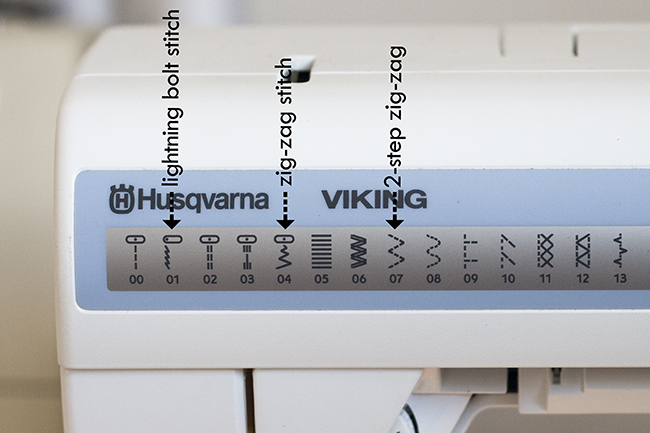I love knit fabrics! I was one of those seamstresses who just couldn't wait to start sewing with knits. I had no idea how to do that on a regular sewing machine though, which was all I had when I started. Somehow, I figured it out and sewed many awesome stretchy projects before graduating to the big leagues of sergers/overlockers.
Today, I want to pass on some of my tips and tricks to you. There are a lot of seamstresses who are afraid to tackle knits with their regular sewing machine. I hope that after today's post, you won't be one of them. Knits are not as difficult as you might think if you just apply the right stitches and a few simple tricks.
Today, I want to pass on some of my tips and tricks to you. There are a lot of seamstresses who are afraid to tackle knits with their regular sewing machine. I hope that after today's post, you won't be one of them. Knits are not as difficult as you might think if you just apply the right stitches and a few simple tricks.
The 4 main stitches used for sewing knits are
1) the lightning bolt stitch - also called the knit stitch. You can see the little lightning bolt like icon on my sewing machine above. This is specially designed for sewing knit fabric and has a lot of flex built into it. Sadly, not all machines come with this option.
2) zig-zag stitch - this is most often used for sewing knits and it works great if you keep a few things in mind. First, keep the stitch length on the shorter side - this will add flexibility to the seam. Also, you can slightly pull the fabric while sewing to add even more stretch to the seam. It might look a bit wavy when you're done, but a good press will rectify that for sure.
3) 2-step zig-zag stitch - this stitch is most often used for lingerie and swimwear sewing. It's super stretchy and easy to work with. While it's often used as a top-stitch, it can also successfully be used to sew joining seams like side seams or back seams.
4) straight stitch with a twin/double needle - used for hemming knits. The upside of this stitch looks like two parallel lines of straight stitches, but the back (because there's still only one bobbin) looks like a zig-zag stitch. I've learned that I need to up the tension quite a bit on my sewing machine to get a nice zig-zag stitch on the bottom. Getting that zig-zag is really important for the seam to stretch. when the upper threads don't have enough tension, you might end up with just a straight bobbin thread going through, which of course will not stretch with the fabric. Another quick tip would be to keep an eye out for the top two threads. Since they are both threaded through the same way up unitil the needle, the friction while sewing can cause them to twist up and break. So, nice and steady sewing.
I made a video to show you how the different stitches perform when stretched. The quality isn't the greatest, but I hope it's informative non-the-less.
The type of needle you use for a knit project is also very important. If your thread keeps breaking or you're left with tiny holes after sewing, you're using the wrong needle, or you're needle needs replacing. Breaking thread can also be a tension problem, but mostly it's something to do with the needle (or the incompatibility between the thread and the needle).
For stretchy fabrics, always use a ball-point needle. It usually says jersey or overlocker/serger on the pack. I've found that no.90/14 works for most knits. Same thing with the twin/double needle. Make sure it's made for stretchy fabrics because they also make them for top-stitching jeans.
As for thread, nothing special is needed. There are special threads for sergers that are super stretchy, but I've never used them, and they wouldn't be suitable for a regular machine anyway.
My final tip for sewing knits successfully with a regular machine is to lower the presser foot pressure. This way, the fabric will move more smoothly under the foot, and it won't get dragged by the foot. Another way to do this would be to lower the feeding dogs a bit.
I hope these tips are useful to you and will get at least some of you over the fear of sewing with knit fabrics. They're awesome, just give it a try!
Tomorrow, I will share a project where you can put all this new knowledge to the test.
If you have any questions, let me know in the comments. Or, perhaps you have another tip you'd like to share with us.
xo. Hanna
















Thanks for sharing! Looking forward to the project tomorrow.
ReplyDeleteYou're welcome!
DeleteGreat tips on sewing knits! I've definitely struggled, and at times failed to sew with knits properly on my regular machine, so I'll be carrying this info with me into my next projects :)
ReplyDeleteGlad you found it helpful, Andrea! I think one important thing to always keep in mind, that it's not only about the stitch, but also about the thread tension, the needle and the presser foot pressure. I've found that it's always useful to tweak those little thing on a piece of scrap fabric before getting to the actual seams.
Delete